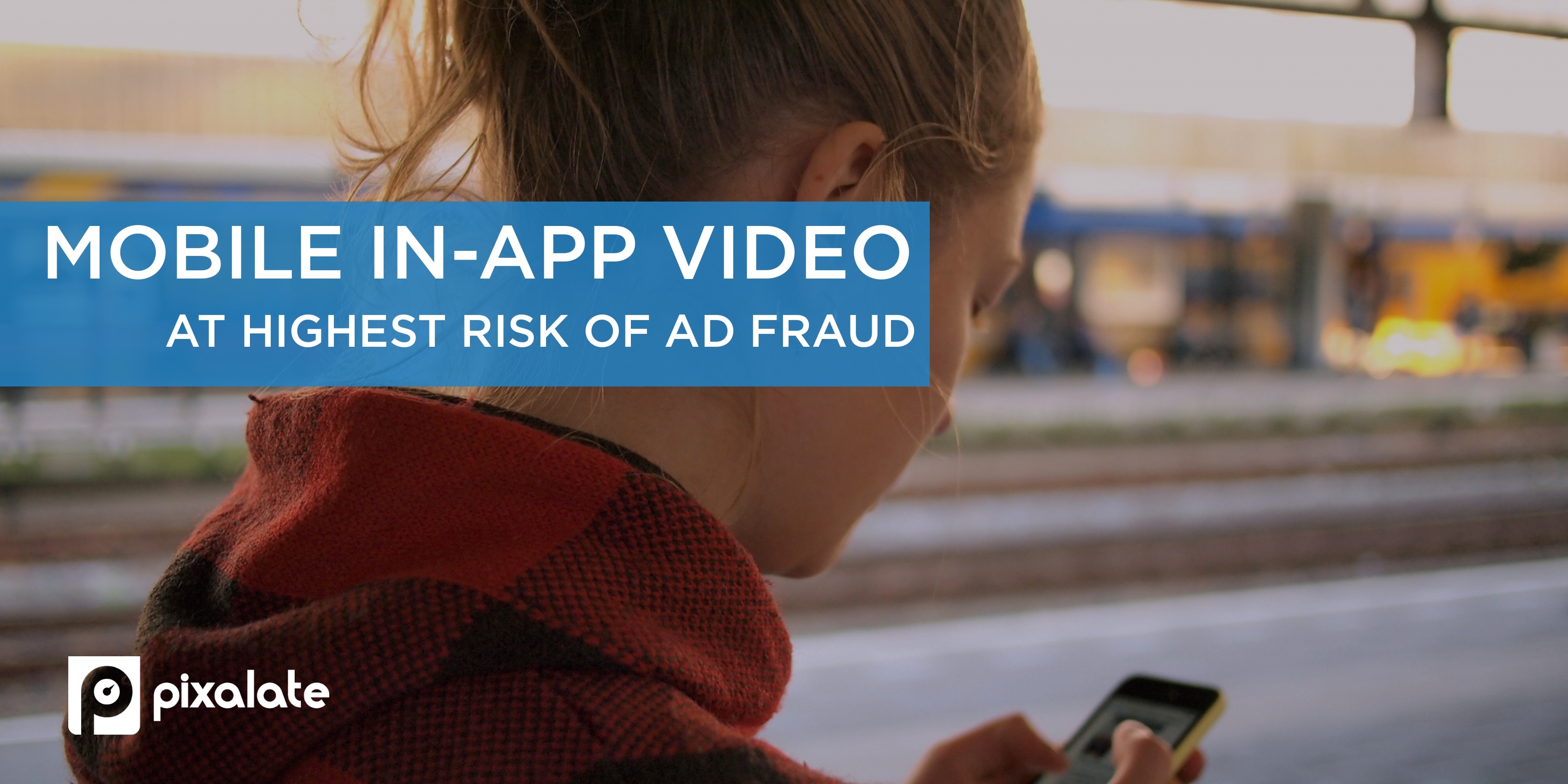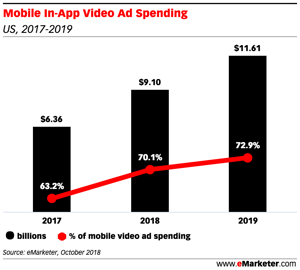


Video advertising is primed to power significant growth for U.S. programmatic ad spend, wrote eMarketer in its latest ad spending forecast — and mobile is the driving force.
This year, for this first time, mobile devices will account for more than half (52.5%) of all programmatic video ad spend in the U.S., with 70.1% of all mobile video ad spend going in-app.
Video is the fastest-growing channel in programmatic advertising. Per eMarketer, video ad spend growth in the U.S. will rise 34% this year — more than display (30.5%) and mobile (32.5%). Video is no longer a fringe channel that marketers can experiment with: It’s the primary driver of programmatic growth.
The problem? Ad fraud hits mobile in-app video the hardest.
Pixalate collected global programmatic advertising data between May and August 2018 to measure invalid traffic (“IVT”) rates across devices and channels. Our data reveals that mobile in-app video — on both smartphones and tablets — is the riskiest environment for advertisers.
Per eMarketer, mobile in-app video ad spend will rise 43.2% this year, up to $9.1 billion. It will rise another 28% next year, to $11.6 billion.
This is not surprising. After all, mobile in-app video is a convergence of three of the fastest-rising trends in advertising (mobile, app, and video). However, because mobile in-app video is where all things relatively new intersect, marketers are ill-prepared to meet the challenges.
Mobile in-app is inherently more difficult to measure compared to desktop, and video advertising is also challenging to properly measure. Some anti-ad-fraud industry initiatives — like ads.txt — don’t yet exist within mobile apps, putting the in-app environment even further behind the 8-ball when it comes to maintaining quality. (The industry is waiting on the app stores to support mobile in-app ads.txt, reported Digiday.)
It’s a recipe for ad fraud, and the fraudsters know this. It’s difficult to detect, which allows the fraudsters to fly under the radar for longer periods of time.
As RhythmOne’s Karim Rayes, SPV of products and business development recently said, "IVT for mobile apps acts a bit differently, because once it gets inside the app, it has a longer lifespan than mobile web."
Our MegaCast app discovery — one of the largest examples of mobile app ad fraud uncovered to date — showed that the alleged mobile app laundering relied on 40% video ads and 60% display ads. Even though there were fewer total invalid video ads than display ads, the video ads accounted for 84% of the lost money because video carries higher CPMs.
Fraudsters have a high financial incentive to exploit video ads for their own gain, and they will continue to do so unless marketers take the proper precautions.
Our data reveals that mobile in-app video ad fraud is the biggest problem for advertisers, and our next piece will show you what you can do about it.
*By entering your email address and clicking Subscribe, you are agreeing to our Terms of Use and Privacy Policy.
These Stories on Mobile
*By entering your email address and clicking Subscribe, you are agreeing to our Terms of Use and Privacy Policy.

Disclaimer: The content of this page reflects Pixalate’s opinions with respect to the factors that Pixalate believes can be useful to the digital media industry. Any proprietary data shared is grounded in Pixalate’s proprietary technology and analytics, which Pixalate is continuously evaluating and updating. Any references to outside sources should not be construed as endorsements. Pixalate’s opinions are just that - opinion, not facts or guarantees.
Per the MRC, “'Fraud' is not intended to represent fraud as defined in various laws, statutes and ordinances or as conventionally used in U.S. Court or other legal proceedings, but rather a custom definition strictly for advertising measurement purposes. Also per the MRC, “‘Invalid Traffic’ is defined generally as traffic that does not meet certain ad serving quality or completeness criteria, or otherwise does not represent legitimate ad traffic that should be included in measurement counts. Among the reasons why ad traffic may be deemed invalid is it is a result of non-human traffic (spiders, bots, etc.), or activity designed to produce fraudulent traffic.”




